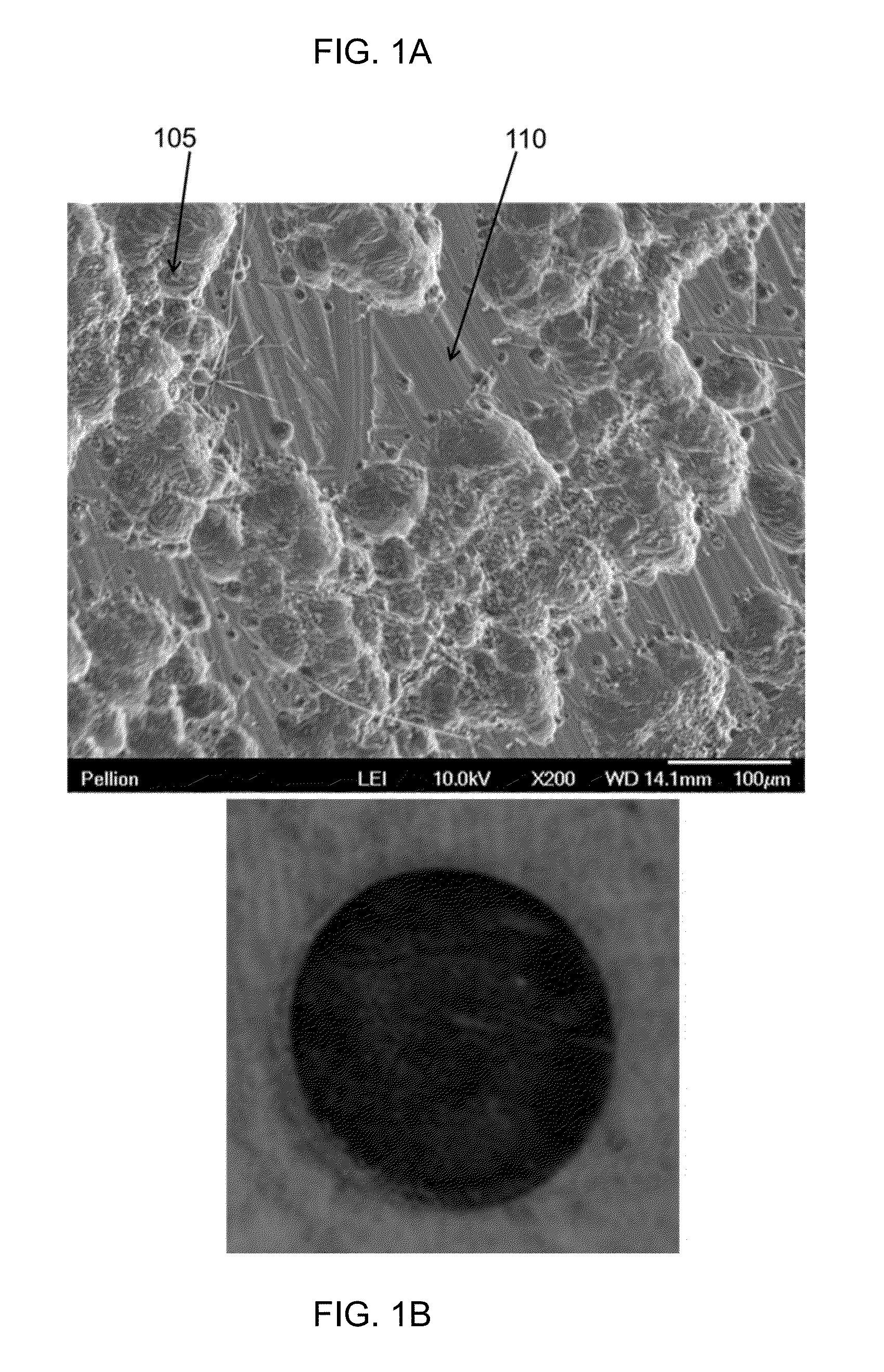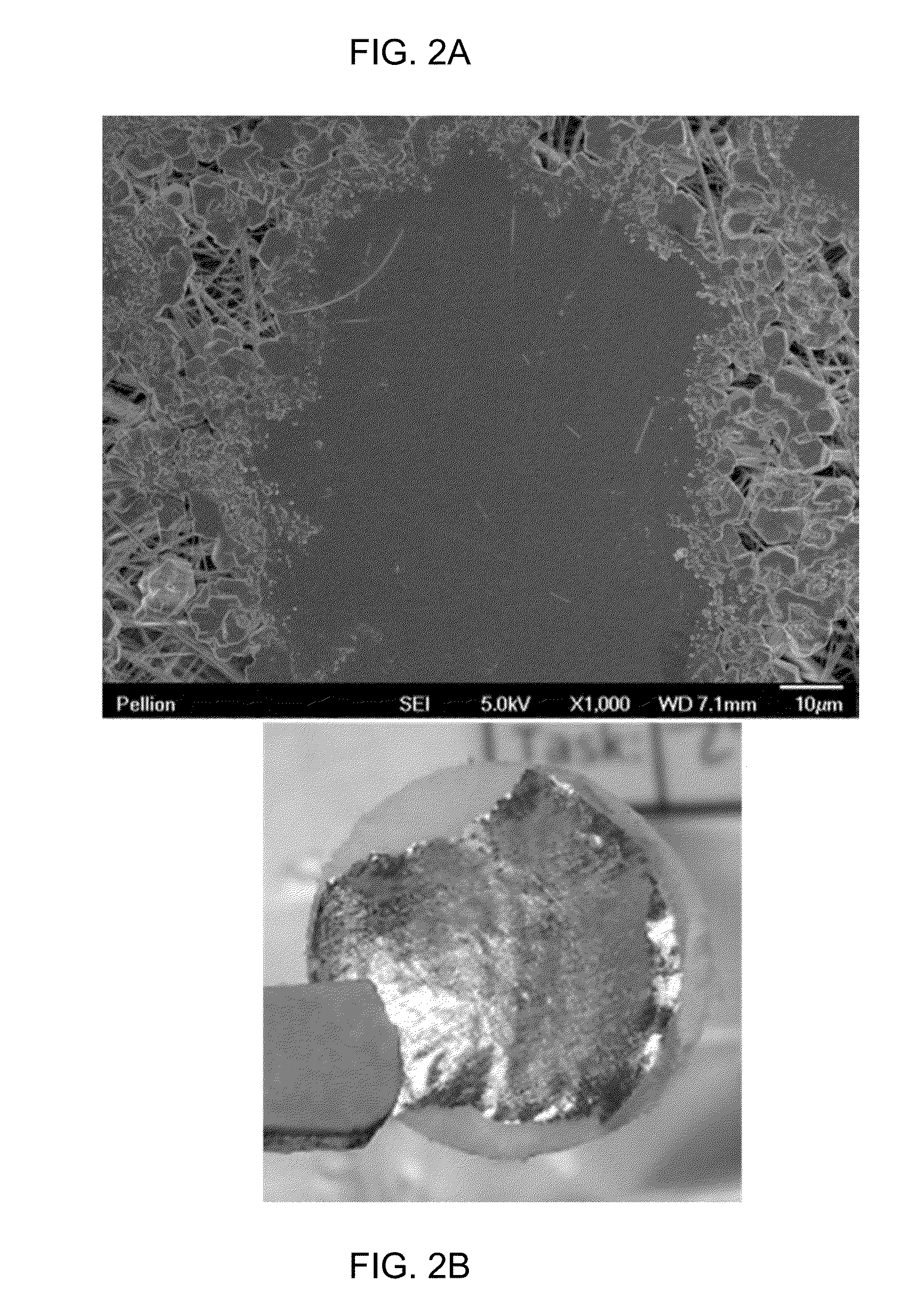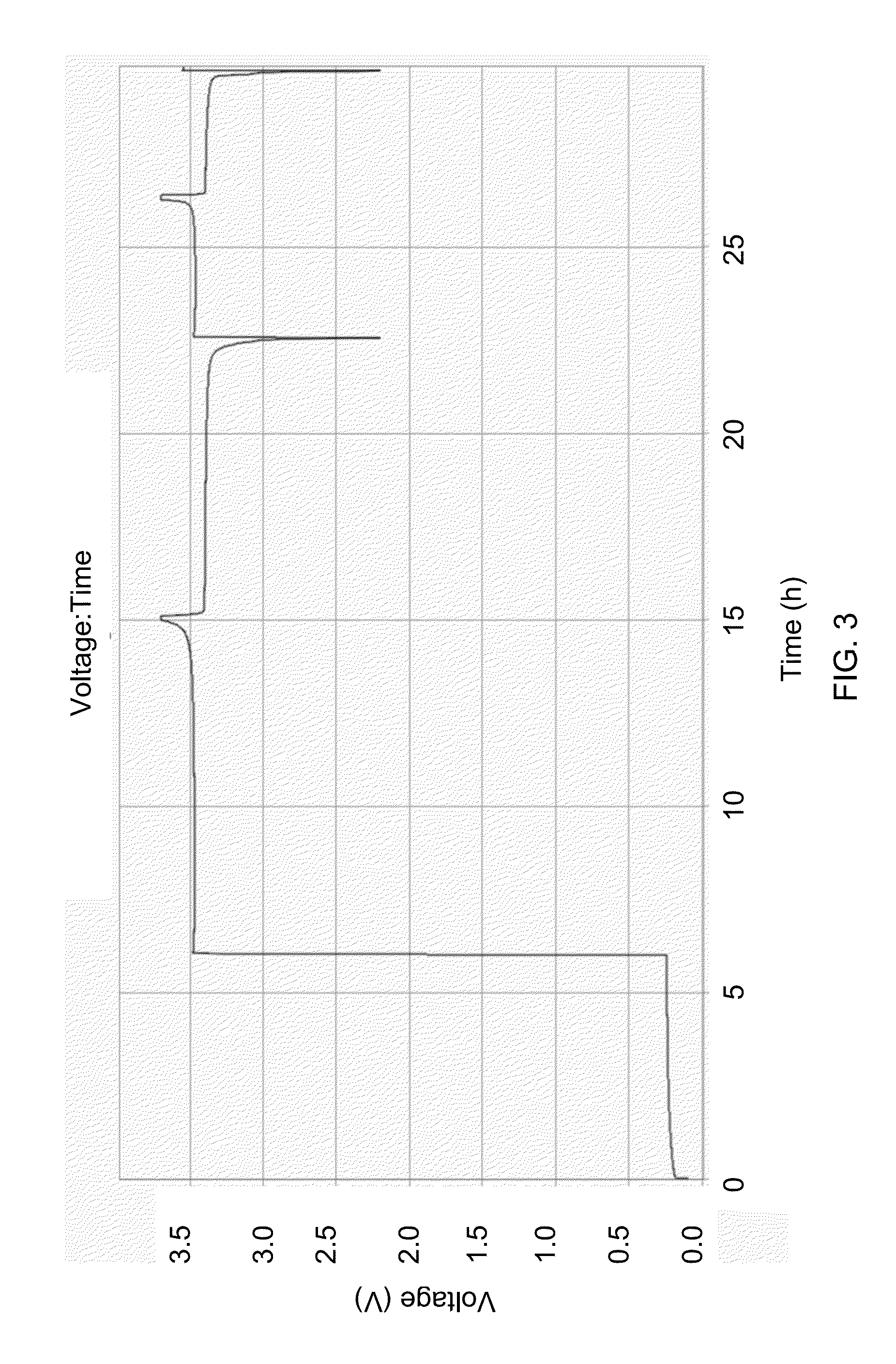Electrochemical cell and method of making the same
a technology of electrochemical cells and electrodes, applied in the direction of secondary cells, cell components, sustainable manufacturing/processing, etc., can solve the problems of high reactive metal anodes, significant and well documented safety hazards, and the rapid loss of accessible capacity of metallic lithium anodes, etc., to maximize the volumetric or gravimetric energy density
- Summary
- Abstract
- Description
- Claims
- Application Information
AI Technical Summary
Benefits of technology
Problems solved by technology
Method used
Image
Examples
example 1
[0118]FIG. 3 shows a typical voltage profile of a cell containing N / P ratio + transfers from the cathode to plate out upon the anode Cu substrate, lowering that negative electrode potential to near −3 V vs. SHE. The corresponding cell potential jumps to about 3.5 V, and rises monotonically thereafter to charge cutoff at about 3.7 V. Thereafter discharge and charge can occur anywhere within this window as the anode electrode potential remains low due to the potential of the decomposition products upon the surface. This cell contains a lithium iron phosphate cathode assembled vs. a copper negative electrode substrate and immersed in a lithium hexafluorophosphate in ethylene dicarbonate and dimethyl carbonate-based electrolyte. All cycling was conducted at room temperature. The first cycle was conducted at 17 mA / g while the subsequent cycling is 34 mA / g.
example 2
[0119]FIG. 4 shows a typical voltage profile of a cell containing an N / P ratio + transfers from the cathode to plate out upon the anode substrate, lowering that negative electrode potential to near −3 V vs. SHE. The corresponding cell potential jumps to about 3.8 V, and rises monotonically thereafter to charge cutoff at about 4.4 V. Thereafter discharge and charge can occur anywhere within this window as the anode electrode potential remains low due to the potential of the decomposition products upon the surface. This contains a lithium nickel manganese cobalt oxide cathode assembled vs. a copper negative electrode substrate and immersed in a lithium diflurooxolatoborate in ethylene dicarbonate and dimethyl carbonate-based electrolyte. All cycling was conducted at room temperature and cycle was conducted at C / 5 while the subsequent cycling is 2 C.
example 3
[0120]FIG. 5 shows a typical voltage profile of a cell having N / P ratio <0.9 in the charged state. Herein we show the corresponding cell voltage profile for a cell containing a high capacity transition metal oxide wherein metal ions electrodeposit onto the negative electrode substrate during the initial charging. Thereafter the cell charges and discharges while plating and stripping the metal deposited from the cathode during the initial charge. This example shows a high capacity metal anode cell with an average voltage quite similar to that obtained by electrodepositing Li metal as depicted in FIG. 3.
[0121]FIG. 6-FIG. 9 show various characteristics of the presently disclosed cells, all constructed in a manner such that the Li metal anode is formed in-situ on the first charge of the cell by plating onto an inert current collector. The data for shown in FIG. 6 through FIG. 9 are for cells cycled at room temperature at a variety of charge and discharge rate combinations of commercial ...
PUM
| Property | Measurement | Unit |
|---|---|---|
| temperatures | aaaaa | aaaaa |
| temperatures | aaaaa | aaaaa |
| Coulombic efficiency | aaaaa | aaaaa |
Abstract
Description
Claims
Application Information
 Login to View More
Login to View More - R&D
- Intellectual Property
- Life Sciences
- Materials
- Tech Scout
- Unparalleled Data Quality
- Higher Quality Content
- 60% Fewer Hallucinations
Browse by: Latest US Patents, China's latest patents, Technical Efficacy Thesaurus, Application Domain, Technology Topic, Popular Technical Reports.
© 2025 PatSnap. All rights reserved.Legal|Privacy policy|Modern Slavery Act Transparency Statement|Sitemap|About US| Contact US: help@patsnap.com



